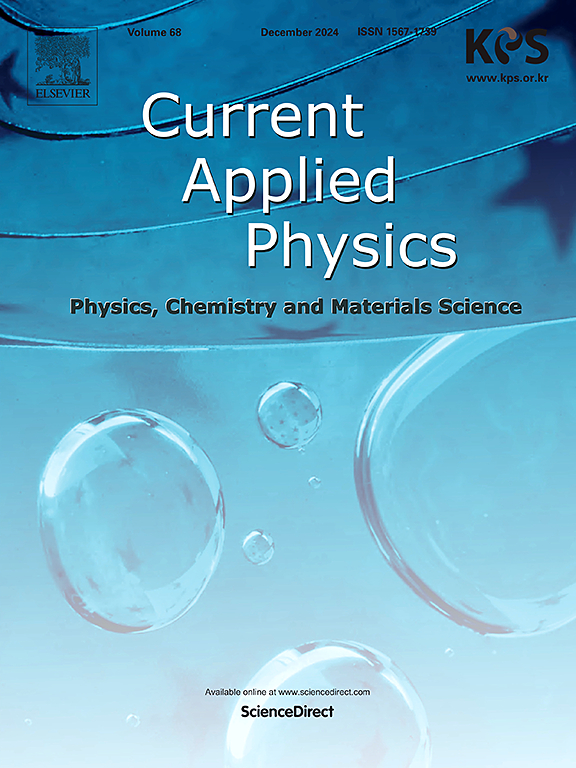Synthesis and Evaluation of Self–Supporting Graphitic Carbon Nitride/Carbon Nanotube (GCN/CNT) ORR/OER Electrodes in Aqueous and Non–Aqueous Media
IF 2.4
4区 物理与天体物理
Q3 MATERIALS SCIENCE, MULTIDISCIPLINARY
引用次数: 0
Abstract
To address the sluggish kinetics of oxygen reduction and evolution reactions, it is important to focus on developing active and robust electrode structures. Herein, a GCN/CNT composite was synthesized using a facile stepladder annealing method and evaluated as an electrode for aqueous and non–aqueous systems, wherein this combination provided storage sites for the reactants and products while facilitating electron transfer, as well as active centers for oxygen reactions, making this composite a bifunctional electrode. Different mass ratios of GCN/CNT were explored to determine their effect on the catalytic properties of the electrode. Among them, the electrode with the lowest GCN content (18GCN/CNT) showed the highest activity and stability towards ORR and OER (ΔE = 1.07 V) in alkaline media, presumably due to its considerable surface area, improved electron conductivity, and nitrogen content. When employed as a Li–O2 battery cathode, GCN/CNT showed lower overpotentials and better cycling stability than CNT due to the presence of GCN active sites. It delivered a discharge specific capacity of 3796 mAh gGCN/CNT−1 at a current density of 100 mA gcathode−1 (0.1C) and 35 cycles at a limited capacity of 1000 mAh gGCN/CNT−1. Moreover, the reversible formation and decomposition of the Li2O2 product after cycling was confirmed in the SEM images and XRD patterns.

水/非水介质中自支撑石墨氮化碳/碳纳米管(GCN/CNT) ORR/OER电极的合成与评价
为了解决氧还原和演化反应的缓慢动力学,重点是开发活性和坚固的电极结构。本文采用简易阶梯退火法合成了GCN/CNT复合材料,并对其作为水系统和非水系统的电极进行了评价,其中该组合为反应物和产物提供了存储位点,同时促进了电子转移,以及氧反应的活性中心,使该复合材料成为双功能电极。研究了GCN/CNT的不同质量比对电极催化性能的影响。其中,GCN含量最低的电极(18GCN/CNT)在碱性介质中对ORR和OER (ΔE = 1.07 V)表现出最高的活性和稳定性,这可能是由于其具有较大的表面积,提高了电子导电性和氮含量。当用作锂氧电池正极时,由于GCN活性位点的存在,GCN/CNT表现出比CNT更低的过电位和更好的循环稳定性。在100 mA g阴极−1 (0.1C)电流密度下,gGCN/CNT−1的放电比容量为3796 mAh,在1000 mAh gGCN/CNT−1的有限容量下循环35次。SEM图像和XRD图谱证实了循环后Li2O2产物的可逆生成和分解。
本文章由计算机程序翻译,如有差异,请以英文原文为准。
求助全文
约1分钟内获得全文
求助全文
来源期刊

Current Applied Physics
物理-材料科学:综合
CiteScore
4.80
自引率
0.00%
发文量
213
审稿时长
33 days
期刊介绍:
Current Applied Physics (Curr. Appl. Phys.) is a monthly published international journal covering all the fields of applied science investigating the physics of the advanced materials for future applications.
Other areas covered: Experimental and theoretical aspects of advanced materials and devices dealing with synthesis or structural chemistry, physical and electronic properties, photonics, engineering applications, and uniquely pertinent measurement or analytical techniques.
Current Applied Physics, published since 2001, covers physics, chemistry and materials science, including bio-materials, with their engineering aspects. It is a truly interdisciplinary journal opening a forum for scientists of all related fields, a unique point of the journal discriminating it from other worldwide and/or Pacific Rim applied physics journals.
Regular research papers, letters and review articles with contents meeting the scope of the journal will be considered for publication after peer review.
The Journal is owned by the Korean Physical Society.
 求助内容:
求助内容: 应助结果提醒方式:
应助结果提醒方式:


